Eupatorium spp.
Are you ready to explore the fascinating world of boneset (Eupatorium spp.)? Read along as we give you the knowhow on growing and caring for these plants in your garden.
In our comprehensive care guide, we’ll walk you through everything you need to know about bonesets, from intriguing origins and fascinating history to practical tips on cultivation and propagation.
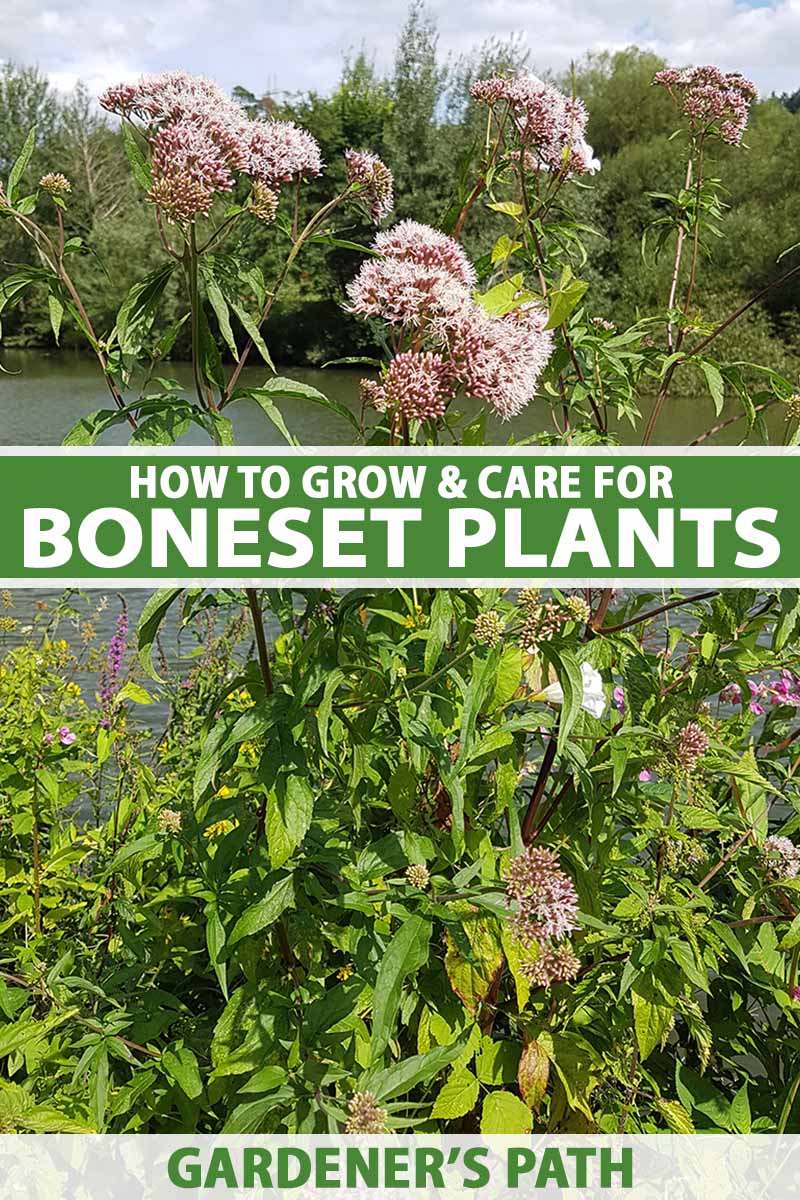
We link to vendors to help you find relevant products. If you buy from one of our links, we may earn a commission.
Imagine the joy of nurturing your very own thriving boneset plants in your garden, where each delicate blossom tells a story of nature’s beauty.
We’ll share essential insights on how to grow these plants successfully, revealing the tried-and-true techniques that will ensure your garden flourishes with vibrant colors and breathtaking blooms.
But it doesn’t stop there! We’ll guide you through the art of pruning and maintenance, helping you shape your plants into stunning focal points that will leave your neighbors in awe.
Worried about pesky pests and stubborn diseases? Fear not! Our expert advice will empower you to effectively manage these challenges, keeping your Eupatorium healthy and thriving.
Whether you’re a seasoned gardener or just starting your horticultural journey, our personal tips and tricks will empower you to create a garden masterpiece with boneset.
So, grab your gardening gloves and join us!
What You’ll Learn
What Are Bonesets?
Eupatorium is a genus of flowering plants that brings together a diverse group known as bonesets or thoroughworts.
Within this genus, you will discover a wide range of species, each with unique characteristics and contributions to the botanical world.
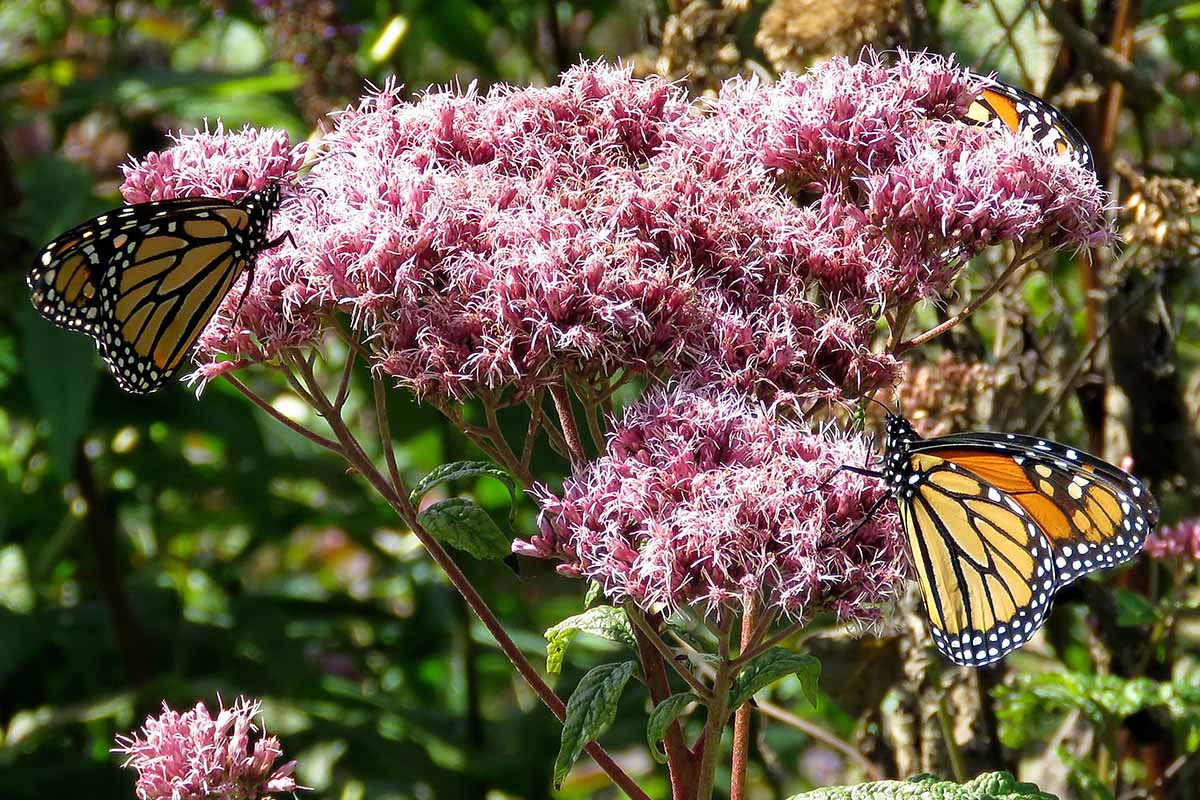
Boneset plants are known for their distinct appearance and charming presence in the garden. These plants produce clusters of small, fluffy flowers that form eye-catching inflorescences, featured on tall and sturdy stems.
As the flowers fade, they often give way to small, dry fruits or seed heads, adding an interesting element to the plant’s overall aesthetic.
You may notice that they look very similar to joe-pye weed (Eutrochium spp.). Joe pye-weed was formerly classified in the Eupatorium genus, and in 2012 was reclassified as Eutrochium.
Together, the flowers and fruit of boneset plants create a visually appealing display that attracts pollinators and adds beauty to any garden or landscape.
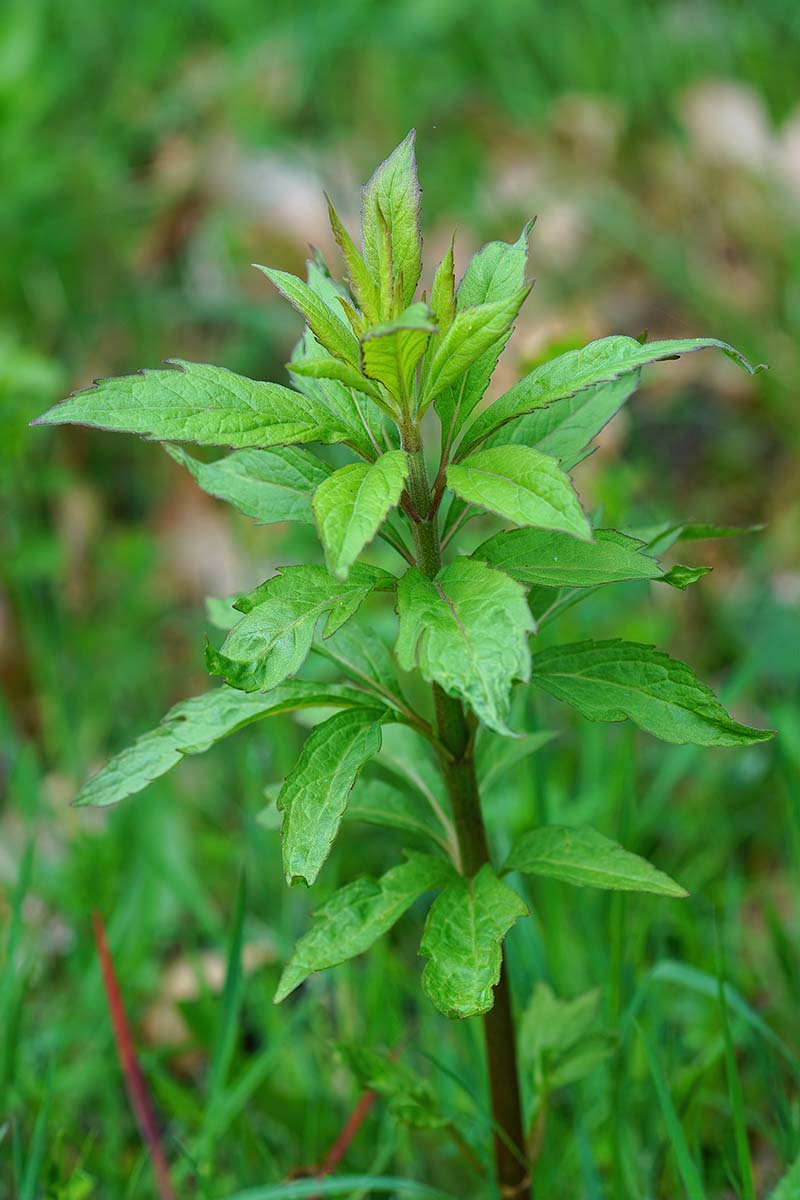
Species in the Eupatorium genus are members of the Asteraceae family, commonly referred to as the Aster family, and the genus contains approximately 60 species.
These plants are native to temperate areas of the Northern Hemisphere, though some species can be found in tropical South America, Mexico, and the West Indies.
Most of these plants are herbaceous perennials, but some tropical species can grow into tree-like or shrubby forms.
Of the many species that exist within this genus, the most common boneset known and grown in home gardens is E. perfoliatum.
Cultivation and History
The Eupatorium genus was named after the Persian king Mithridates VI, also known as Mithridates Eupator Dionysus.
Around 120-63 BCE, he was the king of Pontus, a region which is now part of Turkey.
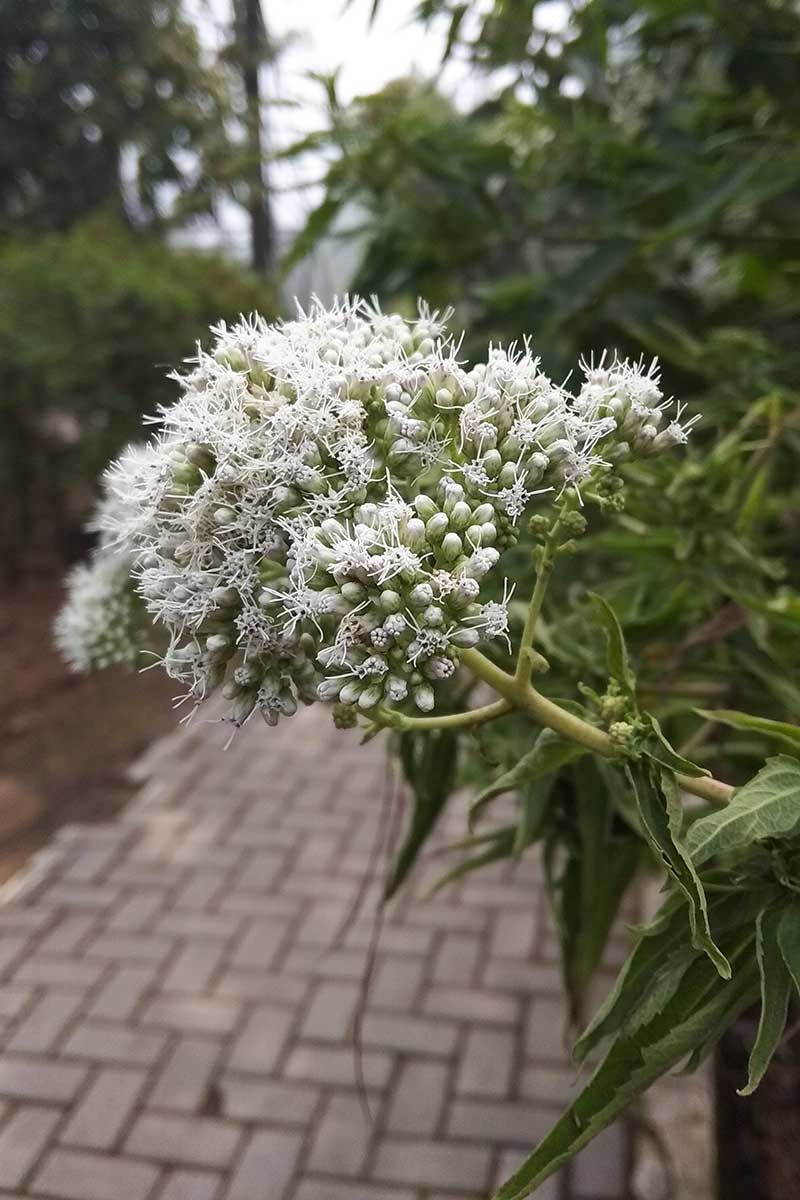
However, the exact reasoning behind using his name for this genus is not entirely clear and may involve some speculation.
The broader reason for this name association involves the way in which the king fits into the herbal lore regarding a concoction called mithridate, which was used historically as a poison antidote.
His story includes experimentation with a vast array of poisonous plants to develop immunity that could possibly have included Eupatorium species.
Some suggest that these plants were named after him in connection with some poisonous Eupatorium species that existed within the genus, such as white snakeroot, E. rugosum. This species has since been removed from this genus and renamed Agertina altissima.
The most commonly known species of boneset is E. perfoliatum. Also known as common or American boneset, feverwort, or thoroughwort, it is known for its medicinal uses as a diaphoretic and analgesic.
It was commonly used in alleviating fevers or cold symptoms, and healing broken bones. Throughout the 18th and 19th centuries, Native Americans used this herb as well, and considered it a cure-all for many ailments.
When gardeners and herbalists think of the term “boneset,” this species is the one that comes to mind. You may be wondering whether a plant can be medicinal when it comes from a genus known to include poisonous species. Well, good question.
This species of boneset is known to be mildly toxic when ingested in large doses due to the presence of pyrrolizidine alkaloids. But at the same time, this is also one of the reasons why this species is valued for its medicinal qualities.
While it’s a favorite to many herbalists, some recommend staying away until more research is available regarding safe dosage.
Boneset Plant Propagation
Eupatorium species can be propagated in a couple of ways, mainly by division and sowing seed.
The specific propagation method selected may vary depending on the species you are working with.
From Seed
To propagate boneset from seed, you must first collect ripe seeds from a mature plant or purchase them from a reputable supplier.
Suppose you are in the perfect place at the right time and find E. perfoliatum growing wild in your area. What an opportunity to collect some seeds!
The seeds naturally ripen about a month after flowering and should be collected when the heads are split and dry, and the seeds begin to float away.
Late in the season, look out for fuzzy flowers that have started to turn brown – this means the seeds are ready to be collected.
If collected a bit earlier, you can dry the seed heads by spreading them out in a protected place where they won’t blow away, or you can place them in an open paper bag for approximately one to two weeks until they have dried out completely.
Shake to remove the seeds from the dry flower heads.
It is okay if the fluff remains attached, as it will not affect germination. Store these seeds in a dry, cool place until you are ready to sow them.
If you choose to sow directly into the ground, you will want to do this in the late fall to provide a period of cold stratification.
If choosing to plant in the spring instead, mix the seeds with some moist sand and store them in the refrigerator for 60 days before sowing outdoors.
Sow seeds one to three feet apart and 1/8 of an inch deep in the soil. Water them in well, and maintain soil moisture in the spring.
Seeds can also be started indoors. Fill a flat with seed-starting mix and scatter your seeds onto the surface of the soil.
Slightly compress the soil and lightly moisten it. Place in bright, indirect light and provide consistent temperatures of 70 to 85°F.
You should expect to see seeds germinate in around two to three months, maintaining soil moisture during this time.
Indoor seedlings may be transplanted outside as soon as they have reached several inches in height.
Be sure to harden them off to outdoor conditions first, gradually increasing exposure over the course of about a week.
From Cuttings
Softwood cuttings will root quite easily, usually within a few weeks. It’s best to take cuttings when plants are not flowering, in late spring or early summer.
Dip cut ends in rooting hormone if you wish, and plant in a pot or tray filled with a well-draining potting medium. A mix of perlite and peat moss works well.
These need the same light exposure and temperature range as what’s required for seed germination. Water them in, and maintain soil moisture.
When your expected frost date has passed in your area, rooted cuttings can be transplanted directly into the soil.
From Root Divisions
When plants have matured, they can be divided in the fall as they go dormant, or in spring as shoots appear at the base of the plant.
Using a shovel or spade, carefully cut through the crown (the base of the plant) and the fibrous mass between two stem buds. You will want to choose a section with one intact bud, which will grow into a new shoot, and a cluster of roots attached to it.
After you have selected a section, gently separate it from the main plant by cutting through the roots.
Immediately replant this new division at the same depth, and keep it watered well until established.
From Seedlings/Transplanting
Once the seedlings are large enough to handle, they can be transplanted into moist potting mix.
Since bonesets spread when they grow, they will need a large container about 12 to 15 inches in diameter with drainage holes.
Wait to plant out until nighttime temperatures remain above 65°F. Seedlings may take up to a year before they are large enough to be transplanted outdoors permanently.
For planting in the ground, space transplants about 16 inches apart for smaller bonesets, or 30 to 54 inches apart for larger species.
How to Grow Boneset Flowers
In USDA Hardiness Zones 3 to 8, bonesets grow as perennials. They can be planted in full sun to part shade.
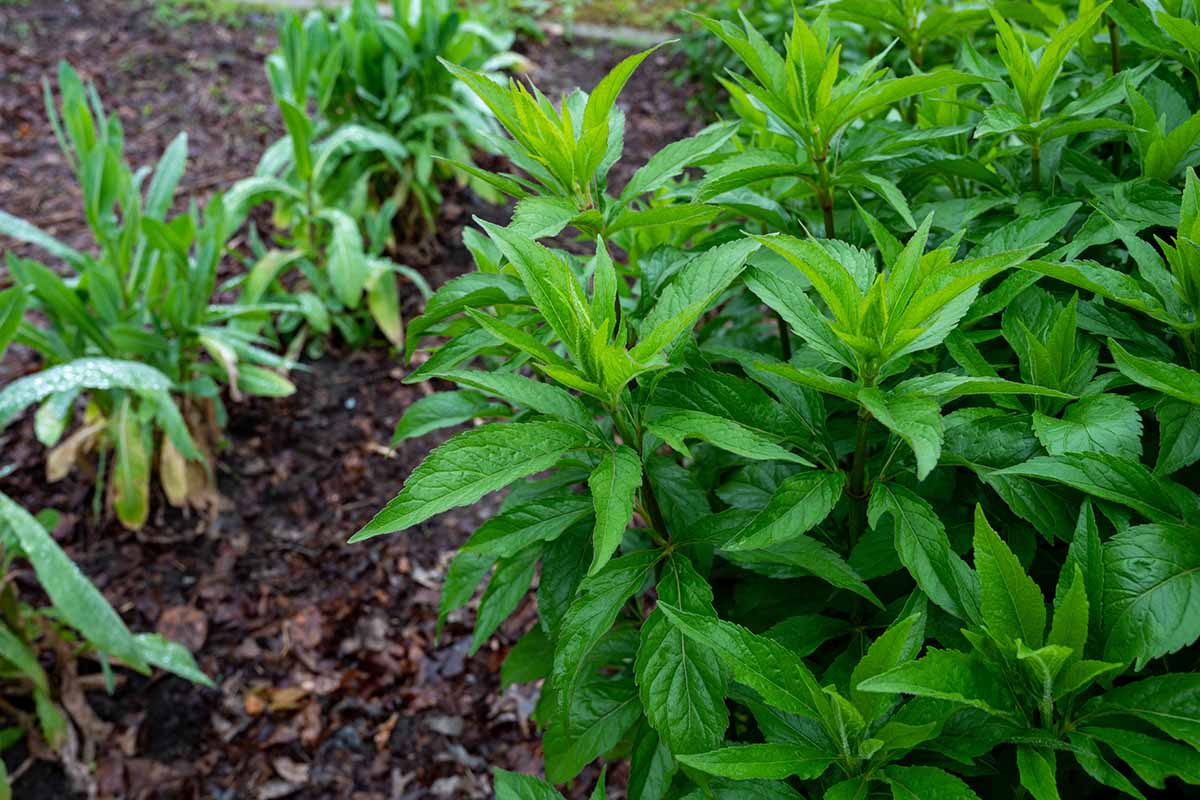
Depending on the species, they are best planted in moist, well-drained soils and can grow in chalk, clay, loam, or sandy soils.
Since sandy soil drains quickly, be sure to amend it before planting with water-retentive organic materials such as compost.
They prefer a soil pH of 6.5 to 7.0 and constant moisture. If you ever wonder if your boneset needs water, you can use the fingertip test.
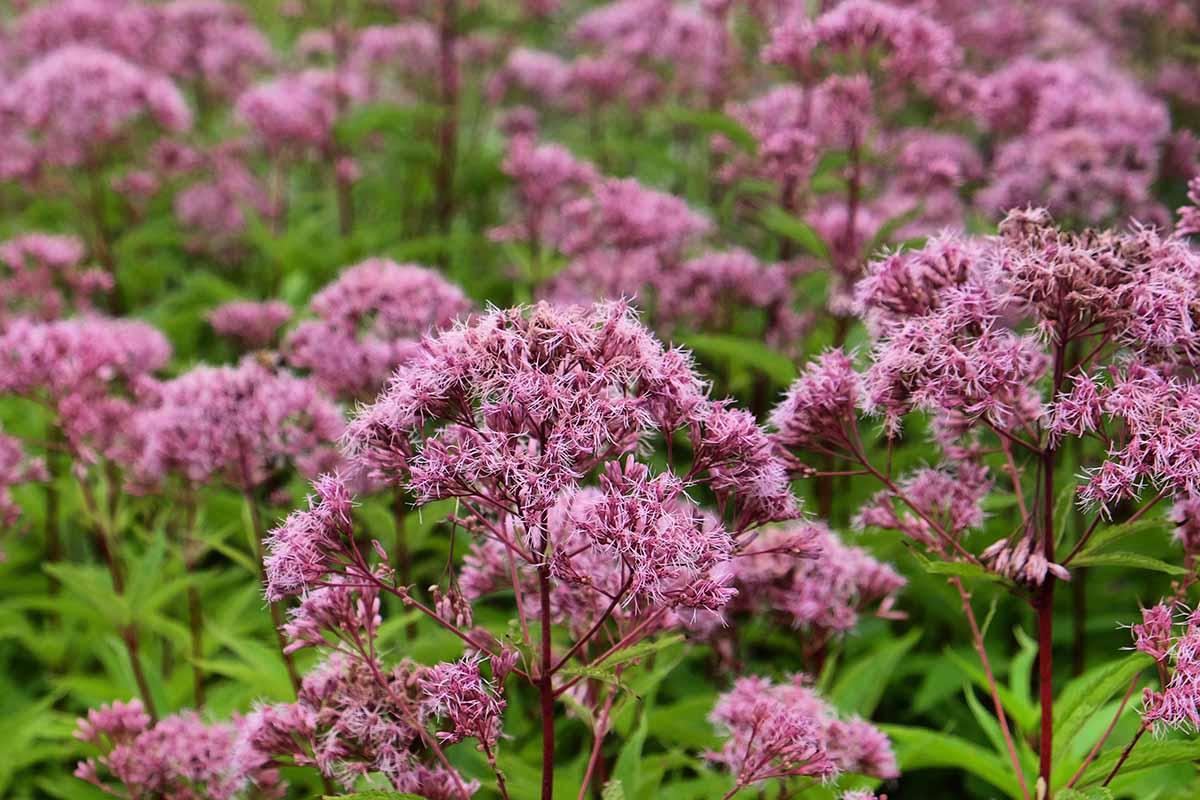
Do this by inserting your finger about an inch deep in the soil – if it’s dry, water it. Too simple, right? Do not let your water-loving boneset dry out completely!
Growing Tips
- If growing in sandy soil, provide extra water or amend with organic materials.
- Bonesets love to be planted in damp areas of the landscape and close to ponds and wetlands.
- These plants perform best in soils with only average fertility.
Pruning and Maintenance
Some gardeners recommend cutting plants back to the ground in the fall, even though the above-ground foliage will die in winter.
This decision often boils down to your maintenance preferences and aesthetic purposes.
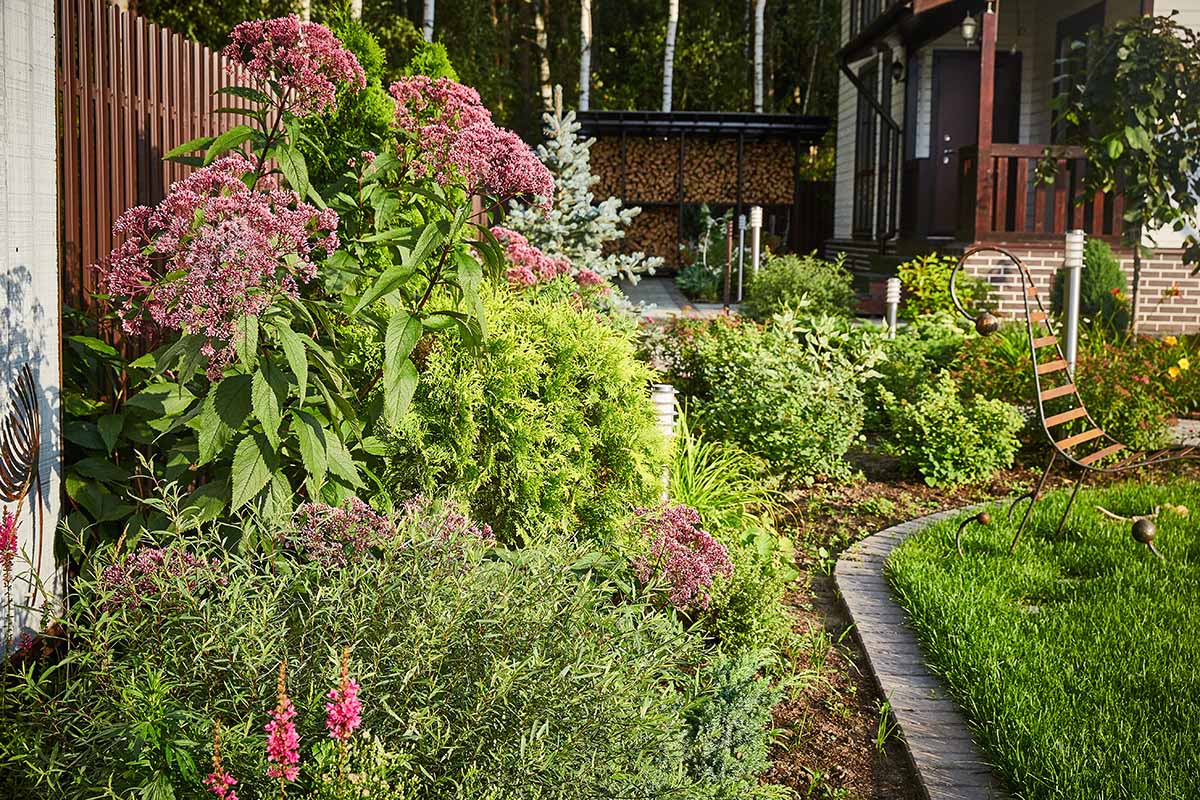
You can go ahead and cut back plants once dieback occurs as the cold weather sets in, or some gardeners will also wait and cut them down to the ground in early spring.
Overall, it is recommended to prune plants back again in the summer before they flower, as this encourages abundant blooms and new growth.
Keep in mind that deadheading will not help this plant rebloom, though it will help control seed spread and plant overgrowth. Bonesets focus on seed production rather than continuous flowering.
Bonesets do not have to be fertilized and they can grow in average, ordinary soil. Giving too much fertilizer can actually cause stems to fall over due to leggy growth.
If you do apply fertilizer, do so once in early spring when you see new growth starting to emerge. I like to dissolve a balanced, granular fertilizer in water for 24 hours to create a diluted solution, and apply that to the soil surrounding the base of plants.
Make sure to add water before and after you apply the fertilizer to help it to settle in.
Boneset Species to Select
When it comes to selecting the right species of boneset for your garden, you have a range of options to choose from.
Each species brings its own unique characteristics and qualities that can enhance your garden landscape.
Here are some top Eupatorium species that are well-suited for different gardening preferences and purposes.
Cannabinum
Native to Europe, this wildflower is popular in England, and its leaves resemble those of hemp. This is where it gets its nickname, hemp agrimony.
Loved for its beautiful, tiny pink flowers that appear from summer into fall, this perennial grows up to four feet tall and spreads about four feet wide.
The aesthetics of this flower go well in a mixed herbaceous border, along a pond edge, or in a cottage garden scheme.

E. cannabinum grows in moist and well-draining soil with a pH of 5.0 to 7.0. Plant it in full sun to partial shade in USDA Hardiness Zones 4 to 9.
Amazon has 20-seed packets available.
Perfoliatum
Native to North America and Canada, E. perfoliatum is a white flowering plant often favored for its medicinal qualities.
This plant grows best in USDA Hardiness Zones 3 to 8, blooming from July to August.
It can withstand a wide range of conditions and is low maintenance, grows well in full sun to partial shade, and can tolerate full shade.
E. perfoliatum forms clumps of unbranched stems, spreads up to four feet wide, and grows up to six feet tall. This species is moderately deer resistant.
Earthbeat Seeds sells100-seed packets.
Serotinum
Also known as late boneset, E. serotinum provides gardens with late-season white flowers from late summer to fall.
Native to eastern and central North America, it performs best in full sun to part shade in fertile, moist, well-draining soils.
It grows up to six feet, though the size of the plant is significantly affected by moisture levels.

Plant it in wildflower and native plant gardens, prairies, meadows, and naturalized areas. This species is moderately deer resistant.
Find 50-seed packets on Amazon.
Managing Pests and Disease
Luckily for gardeners who choose to grow boneset, these species are not generally preferred food sources for vertebrate pests.
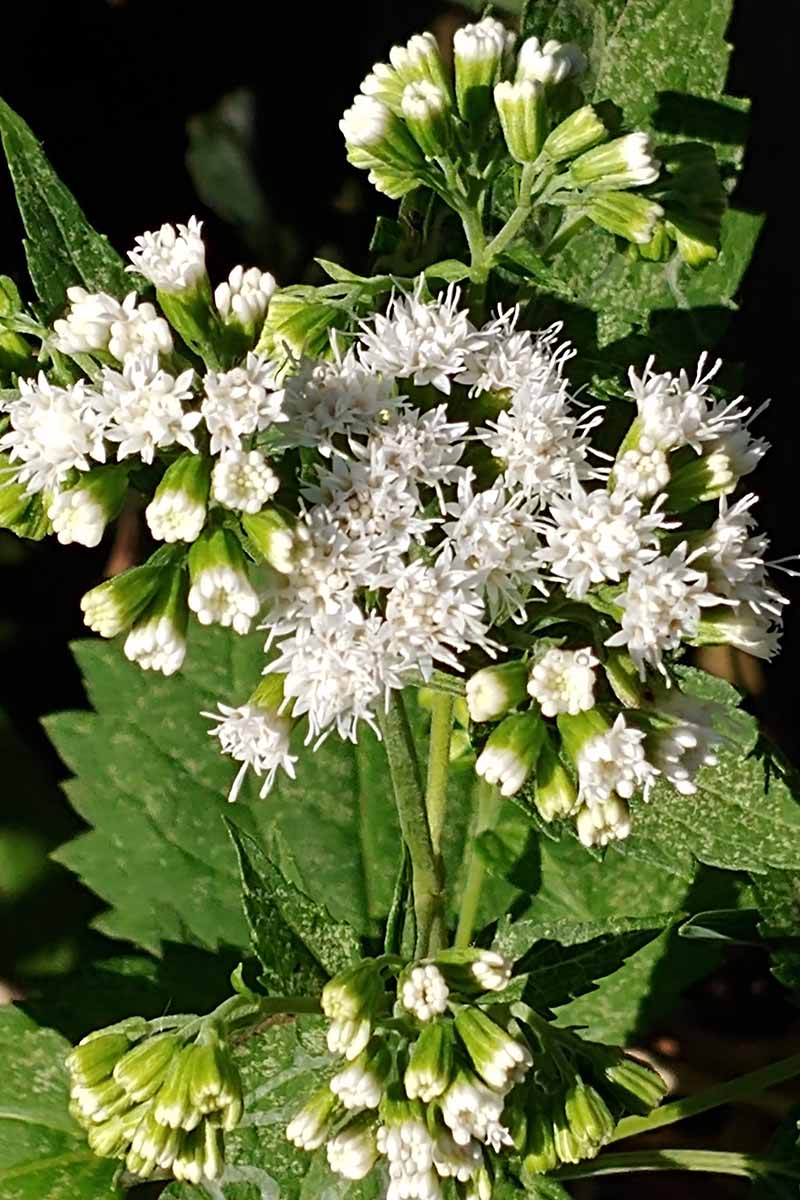
Mammals, birds, and reptiles do not typically target them as food options.
Usually considered resistant to pests and diseases, you shouldn’t experience issues with many of these insects described below, if any.
Let’s take a look at a few pests that it may still be possible to find.
Flea Beetles
These shiny-coated beetles will feed on foliage, producing “shotholes” in the leaves.
They won’t cause fatal damage to your boneset but infestations can cause plants to look unhealthy and bring their overall quality down.
Getting rid of them couldn’t be easier – mix one teaspoon of mild liquid soap with one liter of water.
You will spray it on the adult beetles, and this homemade insecticidal soap kills them on contact with no residual effects.
You can also use neem oil, spraying the plant leaves to get rid of the pests and discourage them from feeding.

Placing yellow sticky traps in your garden can help to trap flea beetles as well. Find yellow sticky traps available via Amazon.
Read more about dealing with flea beetles in our guide.
Lygus Bugs
Lygus species, also known as tarnished plant bugs, will use their piercing-sucking mouthparts to feed on the reproductive structures and plant sap of your boneset.
Their presence can cause damage to leaves, buds, flowers, and developing fruits. This damage can manifest as distorted growth, necrotic spots, or stippling of the foliage.
One of the best parts about nature that any gardener can appreciate is the circle of life seen in the form of natural enemies and biological control.
Sometimes we can be hands-off and allow nature to do its job.
Like other insects, lygus bugs have natural predators such as parasitic wasps and predatory insects, which will help keep populations from reaching pest levels.
Sawflies
These insects feed on the leaves, causing skeletonized foliage or defoliation. They will show up for a feast without ever sending you an invite.
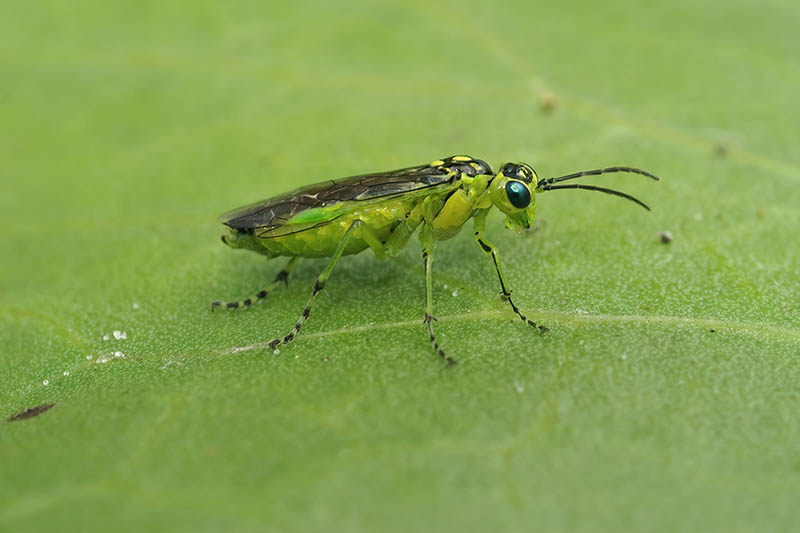
While this is one party you don’t want to have to show up to, infestations will not cause severe enough damage to your plant regarding health, but they will affect your plant’s appearance.
Fortunately, you have plenty of ways to get rid of these partygoers.
If you are up to it, a simple crush can eliminate them, or drop them in insecticidal soapy water.
This homemade sawfly killer combines four teaspoons of neem oil, a gallon of water, and a little liquid soap.
You can also spray some on the leaves and other affected areas. Make sure to reapply after it rains.
Best Uses for Boneset Flowers
Bonesets are highly valuable plants that serve multiple purposes in the garden.
They not only attract and support a diverse range of pollinators but also contribute to the creation of beautiful rain gardens, effective erosion control, and various other landscape applications.
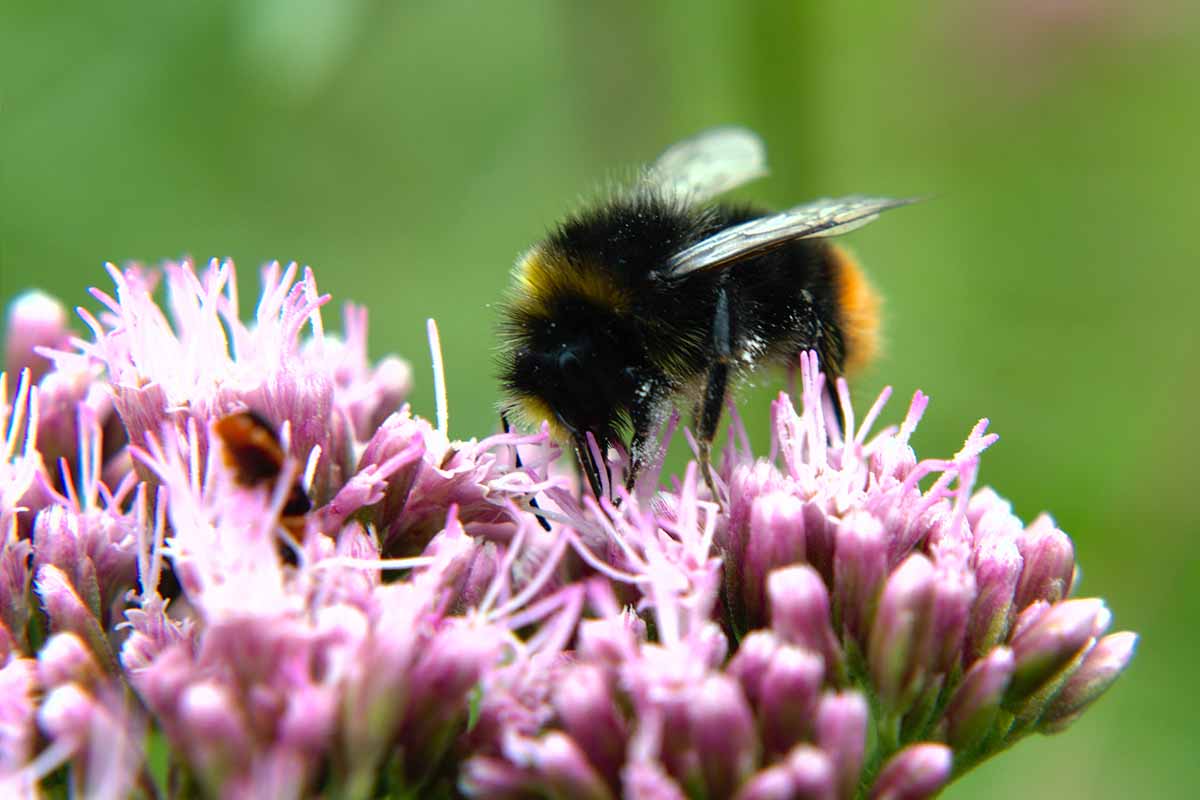
With their versatile nature, they can be cultivated in different settings, making them suitable for a wide range of garden styles.
They can be incorporated into borders, native plant gardens, meadows, prairies, and wildflower gardens, adding both aesthetic appeal and ecological value.
Additionally, bonesets can thrive in containers, woodland gardens, water gardens, and even herb gardens, adapting well to diverse growing conditions.

Beyond their ornamental and ecological benefits, bonesets also possess medicinal properties, which are of interest to gardeners and herbalists.
Their historical use in traditional medicine has led to their inclusion in herbal practices today, where they are valued for their potential therapeutic qualities.
Quick Reference Growing Guide
| Plant Type: | Perennial herbaceous plants and woody shrubs | Flower/Foliage Color: | Pink, white/emerald green |
| Native to: | Temperate areas of the Northern Hemisphere | Maintenance: | Low |
| Hardiness (USDA Zones): | 3-8 | Tolerance: | Disease, insect pests, a variety of soil types |
| Bloom Time: | July-October | Soil Type: | Chalk, clay, loam, sandy |
| Exposure: | Full sun to partial shade | Soil pH: | 6.5-7.0 |
| Time to Maturity: | 1 year (from seed) | Soil Drainage: | Moist, well-draining |
| Spacing: | 1-3 feet(seed), 16-54 inches (transplants) | Attracts: | Bees, butterflies, other beneficial insects; birds |
| Planting Depth: | 1/8 inch (seed), root ball level with or slightly above soil (transplants) | Companion Planting: | Aster, green coneflower, interrupted fern, joe-pye weed, palm sedge, royal fern, swamp milkweed |
| Height: | Up to 6 feet | Uses: | Beds and borders, bog gardens, cottage gardens, meadows, ponds, prairie gardens, rain gardens, streams |
| Spread: | Up to 4 feet | Family: | Asteraceae |
| Water Needs: | Moderate | Genus: | Eupatorium |
| Common Pests and Disease: | Aphids, flea beetles, lygus bugs, sawflies, spider mites; root rot | Species: | Altissimum, capillifolium, fortunei, maculatum, perfoliatum, serotinum |
Beauty, Benefits, and a Blossoming End
The remarkable genus of bonesets offers beauty, versatility, and benefits to both gardeners and the environment.
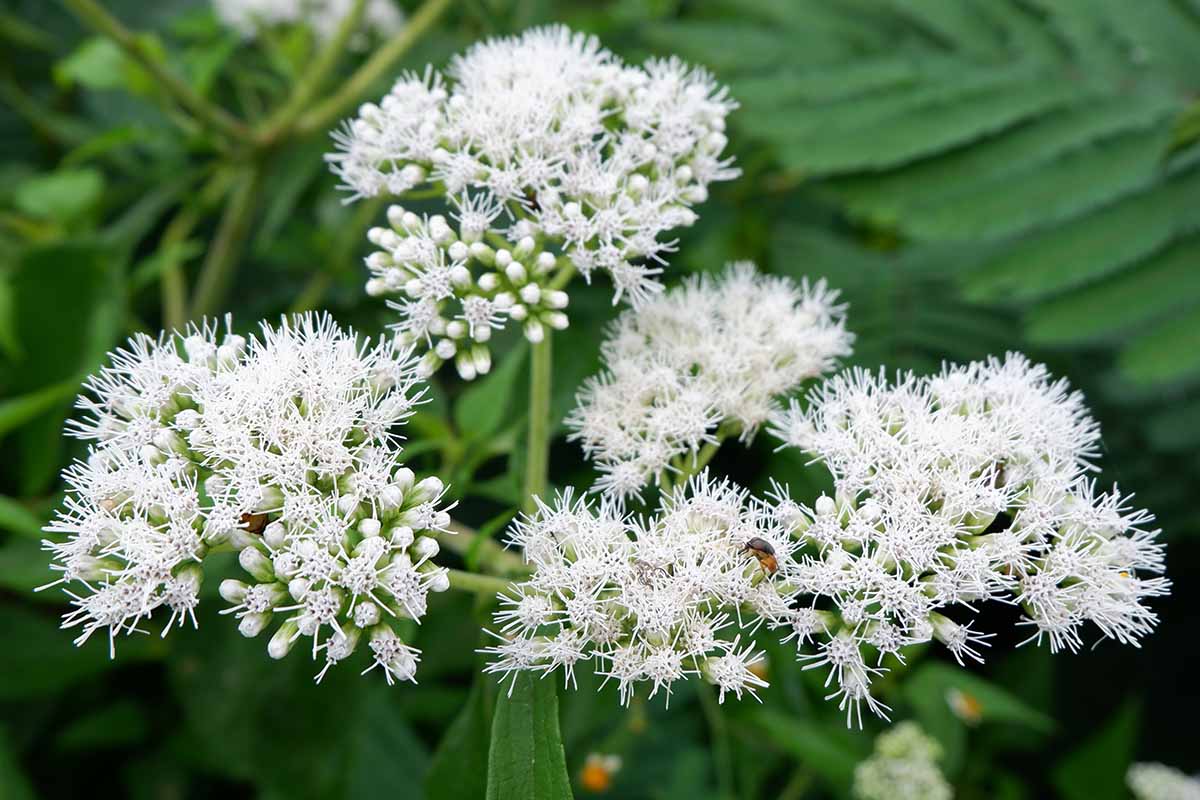
With its attractive flowers, ability to attract pollinators, suitability for various garden settings, and resilient and low-maintenance nature, boneset is an attractive choice for many garden enthusiasts.
Whether you’re a beginner or an experienced gardener, incorporating boneset into your landscape can bring joy and contribute to the overall health of your garden ecosystem.
So, why not give boneset a try and experience the wonders it can bring to your outdoor space?
Do you have experience with bonesets already? Please comment below, we’d love to hear from you!
Are you a big fan of wildflowers? Then check out these articles next:

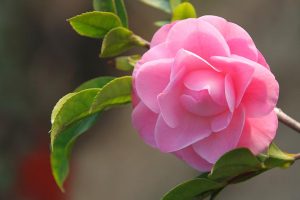
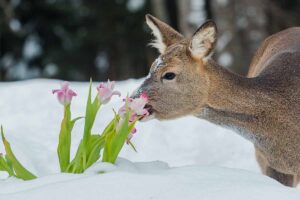
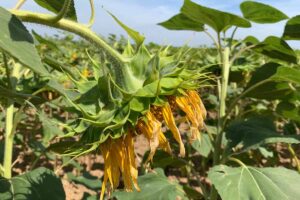
This is a lot of great info on boneset. I came here as I winter sowed a jug of this and of course ended up planting a too close together. With September around the corner I am hoping to divide these plants up. Looking forward to seeing them flowerw next year!
Thank you for the kind words, Mary, and good luck with your divisions!